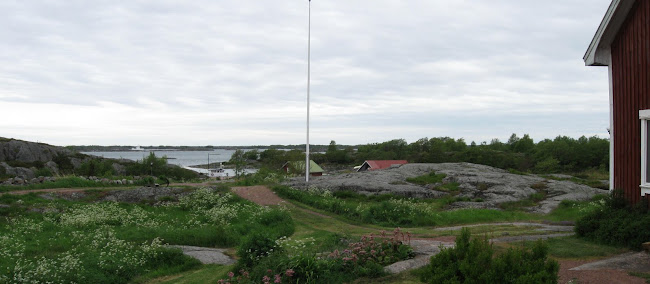For want of a better word
Queen Bee
- Joined
- Oct 30, 2010
- Messages
- 12,502
- Reaction score
- 36
- Location
- South West
- Hive Type
- National
- Number of Hives
- Miriads
Monday, Nov 05 2012 6PM 4°C 9PM 3°C 5-Day Forecast
Good to bee back: 'Extinct' British breed of honeybee found alive and well in church rafters after nearly 80 years
'British Black' species thought to have been wiped out in 1919
Thriving colony found in rafters of church
Bee species native to British isles - unlike other honeybees
By Rob Waugh
PUBLISHED: 12:20, 11 July 2012 | UPDATED: 12:20, 11 July 2012
Comments (32)
Share
The rare apis mellifera mellifera or British Black honeybee are the only species of bee to have survived a strain of the Spanish flu which wiped out what was thought to be every single bee in the UK
The rare apis mellifera mellifera or British Black honeybee are the only species of bee to have survived a strain of the Spanish flu which wiped out what was thought to be every single bee in the UK
A rare 'black' honeybee which was thought to have been wiped out by a strain of Spanish flu in 1919 has been rediscovered in the rafters of a church in Northumberland.
The rare 'British Black' is much darker than other bees, and developed in Britain after the last ice age.
The bees that populate Britain today were mostly introduced from abroad - including the popular honeybee.
The rare ‘apis mellifera mellifera’ or British Black honeybee are the only species of bee to have survived a strain of the Spanish flu which wiped out what was thought to be every single bee in the UK.
Experts believed the creatures to be extinct, but a hive of the insects have been breeding for almost 100 years in the eves of a church in Northumberland.
They were discovered in the roof of Whitfield’s Holy Trinity Church after the church warden found the 19th century church littered with bees.
Conservation officer for the Bee Improvement and Bee Breeders’ Association (Bibba) Dorian Pritchard, was called in to help.
Slates were removed from the church by cutting into the roof with an electric saw, but the bees showed no signs of agitation - and no-one was stung.
Dorian first recognised the insects’ unusual dark features.
More...
The Crusaders' last stand: Pot of gold worth £300,000 found in fortress where it was buried by doomed force of Christian knights
He said: ‘They are generally a lot darker than the European bee with pale thin strips across the abdomen. It takes a specialist bee keeper to recognise them.
‘These bees were the native bees in Britain after the Ice Age but in the 1830s we started to import foreign bees.
‘An epidemic wiped out 90 per cent of the population after the First World War.’
A rare 'black' honeybee which was thought to have been wiped out by a strain of Spanish flu in 1919 has been rediscovered in the rafters of a church in Northumberland
A rare 'black' honeybee which was thought to have been wiped out by a strain of Spanish flu in 1919 has been rediscovered in the rafters of a church in Northumberland
The British Black bee is different from other bees as they developed in the UK after the ice age and when the sea filled the channel
The British Black bee is different from other bees as they developed in the UK after the ice age and when the sea filled the channel
The only surviving bees are predominantly black, with a hint of yellow, but much darker than the common bee seen across the UK
The only surviving bees are predominantly black, with a hint of yellow, but much darker than the common bee seen across the UK
The bees that had made their way into the main body of the building died - but wardens were stunned when they made their way up to the roof and stumbled upon a huge swarm of the insects.
The British Black bee is different from other bees as they developed in the UK after the last ice age.
The only surviving bees are predominantly black, with a hint of yellow, but much darker than the common bee seen across the UK.
They are ideally suited the British climate - particularly that in the North of England - and more so than the European Black bee.
The Spanish flu came to the UK in the early 20th century.
After the disaster, the country was repopulated with bees from abroad, which has led to more species of bee, including the popular honey bee.
Bee experts were called to the church in Whitfield to find a way of tackling the nest, only to realise the pesky bees could have been the rare ‘apis mellifera mellifera’ species.
A handful of dead bees were taken away from the church for examinations to confirm Dorian’s hunch that they were British black honeybees.
Plans are now being made to transfer the bees to a hive before they can be rehomed.
Although no-one connected to the church had noticed the bees, the nest is thought to have been occupied for several years.
Estate maintenance manager, Jonathan Archer said: ‘It is fascinating that these bees have possibly been here this long even though they were thought to be extinct.
‘We now hope that by moving them to a new home they will go from strength to strength with help from experts who know how to take care of them.’
Good to bee back: 'Extinct' British breed of honeybee found alive and well in church rafters after nearly 80 years
'British Black' species thought to have been wiped out in 1919
Thriving colony found in rafters of church
Bee species native to British isles - unlike other honeybees
By Rob Waugh
PUBLISHED: 12:20, 11 July 2012 | UPDATED: 12:20, 11 July 2012
Comments (32)
Share
The rare apis mellifera mellifera or British Black honeybee are the only species of bee to have survived a strain of the Spanish flu which wiped out what was thought to be every single bee in the UK
The rare apis mellifera mellifera or British Black honeybee are the only species of bee to have survived a strain of the Spanish flu which wiped out what was thought to be every single bee in the UK
A rare 'black' honeybee which was thought to have been wiped out by a strain of Spanish flu in 1919 has been rediscovered in the rafters of a church in Northumberland.
The rare 'British Black' is much darker than other bees, and developed in Britain after the last ice age.
The bees that populate Britain today were mostly introduced from abroad - including the popular honeybee.
The rare ‘apis mellifera mellifera’ or British Black honeybee are the only species of bee to have survived a strain of the Spanish flu which wiped out what was thought to be every single bee in the UK.
Experts believed the creatures to be extinct, but a hive of the insects have been breeding for almost 100 years in the eves of a church in Northumberland.
They were discovered in the roof of Whitfield’s Holy Trinity Church after the church warden found the 19th century church littered with bees.
Conservation officer for the Bee Improvement and Bee Breeders’ Association (Bibba) Dorian Pritchard, was called in to help.
Slates were removed from the church by cutting into the roof with an electric saw, but the bees showed no signs of agitation - and no-one was stung.
Dorian first recognised the insects’ unusual dark features.
More...
The Crusaders' last stand: Pot of gold worth £300,000 found in fortress where it was buried by doomed force of Christian knights
He said: ‘They are generally a lot darker than the European bee with pale thin strips across the abdomen. It takes a specialist bee keeper to recognise them.
‘These bees were the native bees in Britain after the Ice Age but in the 1830s we started to import foreign bees.
‘An epidemic wiped out 90 per cent of the population after the First World War.’
A rare 'black' honeybee which was thought to have been wiped out by a strain of Spanish flu in 1919 has been rediscovered in the rafters of a church in Northumberland
A rare 'black' honeybee which was thought to have been wiped out by a strain of Spanish flu in 1919 has been rediscovered in the rafters of a church in Northumberland
The British Black bee is different from other bees as they developed in the UK after the ice age and when the sea filled the channel
The British Black bee is different from other bees as they developed in the UK after the ice age and when the sea filled the channel
The only surviving bees are predominantly black, with a hint of yellow, but much darker than the common bee seen across the UK
The only surviving bees are predominantly black, with a hint of yellow, but much darker than the common bee seen across the UK
The bees that had made their way into the main body of the building died - but wardens were stunned when they made their way up to the roof and stumbled upon a huge swarm of the insects.
The British Black bee is different from other bees as they developed in the UK after the last ice age.
The only surviving bees are predominantly black, with a hint of yellow, but much darker than the common bee seen across the UK.
They are ideally suited the British climate - particularly that in the North of England - and more so than the European Black bee.
The Spanish flu came to the UK in the early 20th century.
After the disaster, the country was repopulated with bees from abroad, which has led to more species of bee, including the popular honey bee.
Bee experts were called to the church in Whitfield to find a way of tackling the nest, only to realise the pesky bees could have been the rare ‘apis mellifera mellifera’ species.
A handful of dead bees were taken away from the church for examinations to confirm Dorian’s hunch that they were British black honeybees.
Plans are now being made to transfer the bees to a hive before they can be rehomed.
Although no-one connected to the church had noticed the bees, the nest is thought to have been occupied for several years.
Estate maintenance manager, Jonathan Archer said: ‘It is fascinating that these bees have possibly been here this long even though they were thought to be extinct.
‘We now hope that by moving them to a new home they will go from strength to strength with help from experts who know how to take care of them.’








